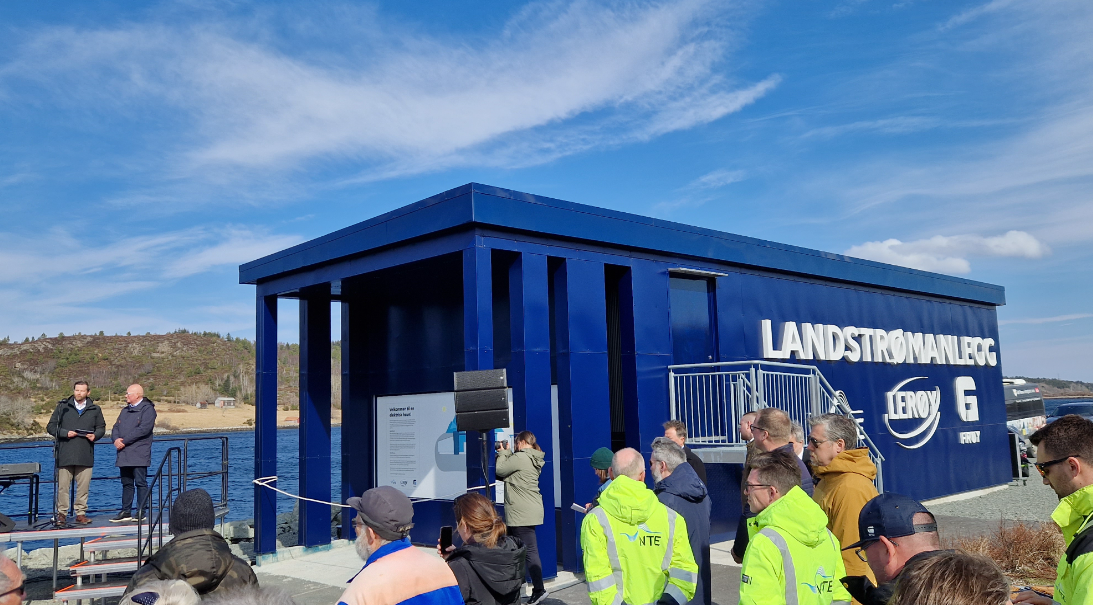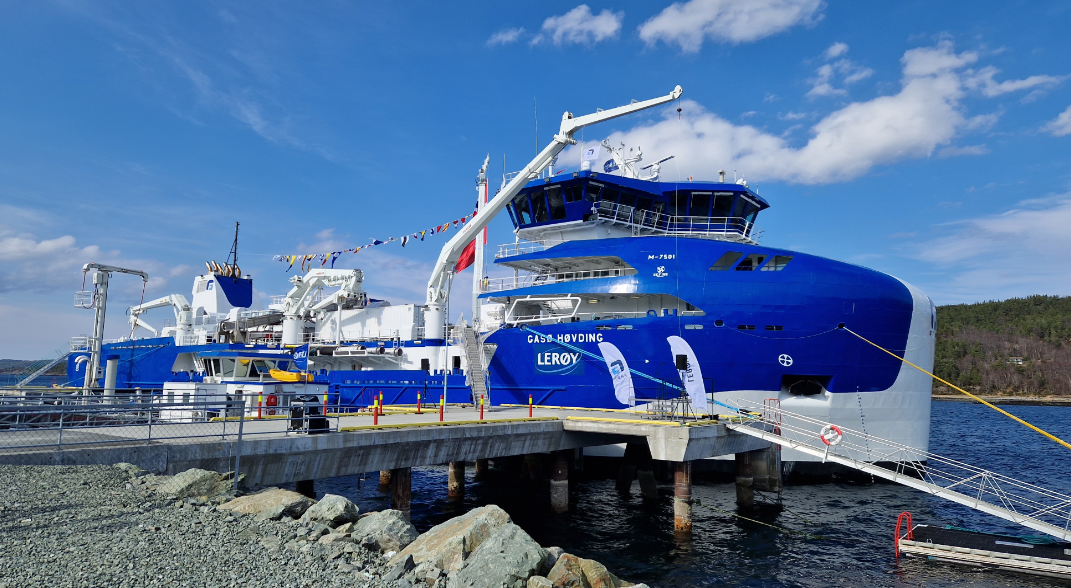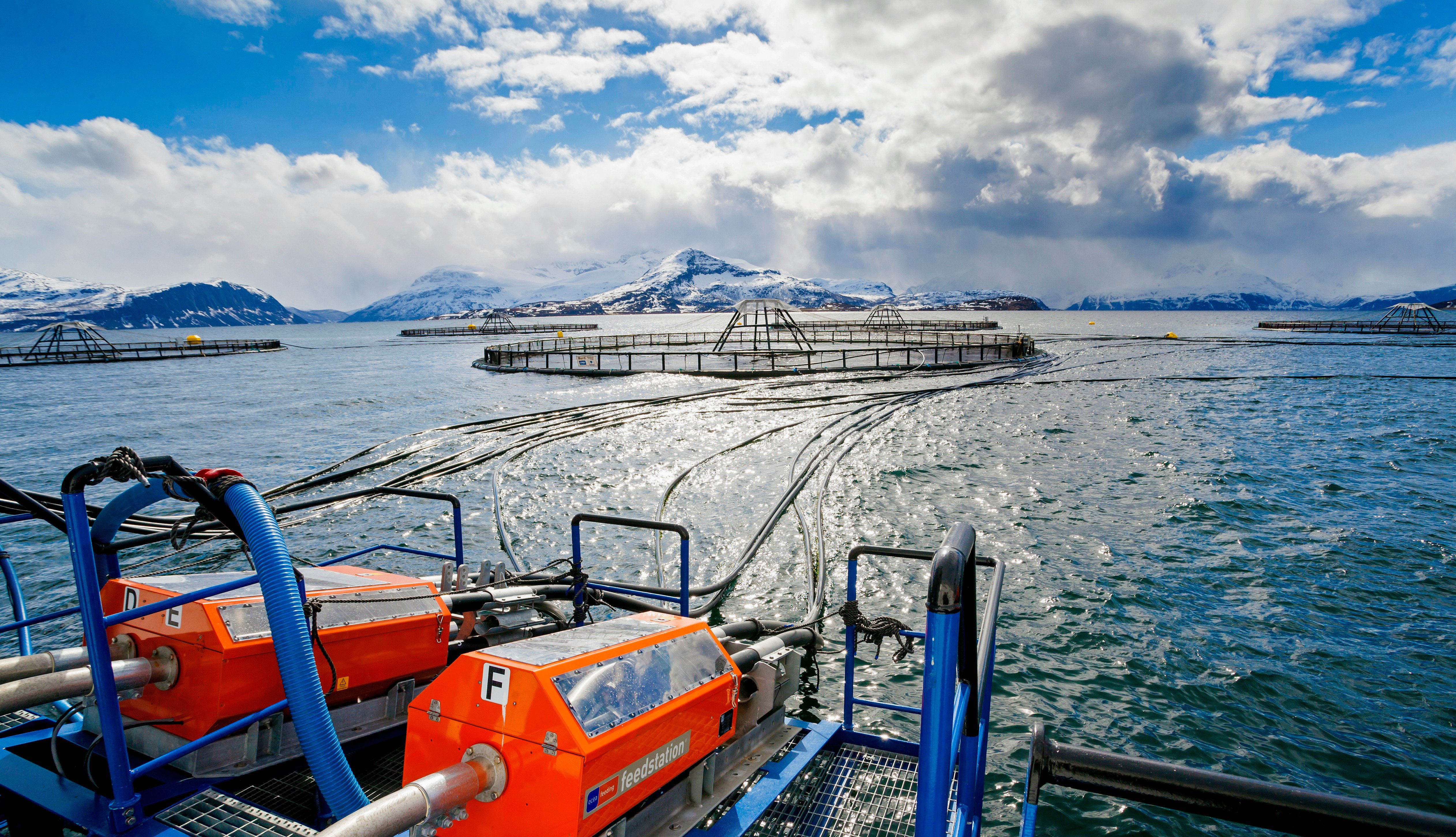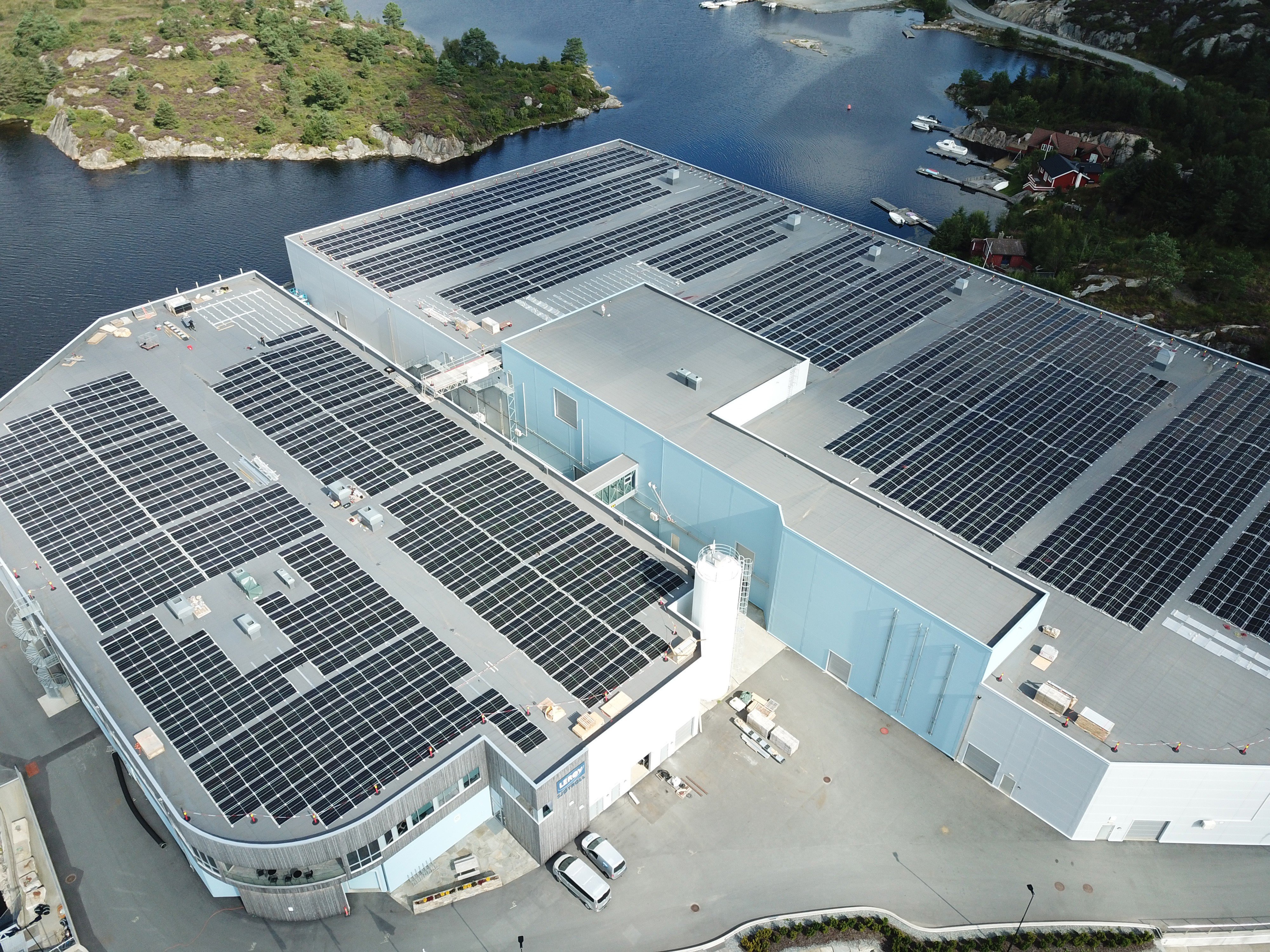
Sustainable development is based on three fundamental pillars:
Environment - We must take care of the environment. All activity affects the environment, but we must ensure that the environment will return to its original state after use in order to be able to operate in an eternal perspective.
Social - we must look after the people and the local environment. Ensure that human rights are safeguarded for employees who are involved directly or indirectly in our value chain and contribute positively to the local environment around us.
Governance – We must comply with laws and regulations, protect our reputation and operate profitably.

We will reduce our greenhouse gas emissions by 46% by 2030. Lerøy has an ambition to be climate neutral by 2050.
In order to reach our greenhouse gas emission reduction target, we have initiated 3 main projects that will contribute to reduction of greenhouse gas emissions in Lerøy. These projects are targeting our most significat greenhouse gas emissions sources.

Raw materials for fish feed have been proven to contribute the highest greenhouse gas emissions. It constitutes a large part of Lerøy's Scope 3 category "Purchased goods and services" (527 804,8 tCO2e in 2022). Lerøy therefore wants to prioritize raw materials that contribute to reaching our grennhouse gas emissions reduction target without compromising biodiversity and other important ESG aspects.
The company has initiated these innovative projects to reduce GHG emissions:
Upstream transportation and distribution is our second largest greenhouse emisson source, and resulted in 433 909,4 tCO2e in 2022. Transportation of produced products to customers is the largest contributar, prioritization of optimalization of transport weight and develop technology to be able to choose more environment friendly transportation is crucial.
Leroy is participating in different innovation programs on how to create alternatives for fossile fules like MGO.
Our total Scope 1 emissions in 2022 was 169 913 tco2e. In the Wildcatch segment Lerøy Havfisk is a part of an innovation program exploring how to use green ammonia to reduce the dependency of MGO, in addidtion the Farming segment which has electrified a large proportion of its of farm locations.
Electrification of fleets, well boats and workboats
The world's largest shore current system for well boats is ready for use at Hitra. This investment is one of many measures we are taking to achieve the company's goal of reducing greenhouse gas emissions by 46% by 2030. Our goal is to create the world's most efficient and sustainable value chain for seafood, says Harald Larssen, general manager of Lerøy Midt.
Lerøy Midt has chartered the wellboat Gåsø Høvding, which has been built to run all systems on board completely electrically for direct delivery of salmon to our slaughterhouse on Jøsnøya in Hitra. The well boat is the world's largest with more than double well volume comparing to normal well boats. The well boat is owned by Frøy Rederi AS, which has invested large sums in the system for electric operation.
With the investment in the high-voltage shore power plant, Lerøy Midt has the potential to significantly reduce nitrogen oxide (NOx) emissions and emissions of several thousand tonnes of CO2 equivalents annually.

The project is a close collaboration between Lerøy Midt AS as the customer, Frøy Rederi AS which owns the wellboat and Nord Trøndelag electricity utility (NTE) which has designed and built the shore power plant.
In addition to NTE and Frøy Rederi AS, Enova (Norwegian state-owned enterprise owned by the Ministry of Climate and Environment. It provides funding and advice for energy and climate projects) has been involved and taken up to 40 per cent of the budgeted investment costs, which has made it possible to carry out the project.
Gåsø Høvding, like other well boats, is manned around the clock, so the crew in particular will be able to benefit from the silence. This will improve the working conditions and the working environment for everyone involved, both those on board and those who work at our Jøsnøya plant. In addition to the actual transport of salmon from the cages to slaughter, the size of the boat allows the entire biomass from a cage to be handled in one load. If, for example, salmon lice treatment is necessary, the well boat can be filled with fresh water that it can produce itself and treat the entire cage in one operation. The treatment is a gentle treatment against this parasite.The well boat is equipped with today's most modern equipment, which means that the salmon have as good conditions on board as they have in a cage in localities.

The Group has established different measures in order to reduce its environmental impact; from obtaining power from land, hybrid fleets, floating solar cells, to electric working boats.
Wherever it is possible, the Group seeks to use electricity sourced from land-based powerlines instead of electricity from generators at each production site.
Power from land usually makes good overall economic sense.
Power from land results in:
The further development of power from land should entail a degree of overcapacity, thus enabling electrified boats to be recharged.
More than 80 % of our sites now run on power from land, on remaining sites where the infrastructure is insufficient for land-based electricity, Lerøy Seafood Group is developing hybrid solutions that allow for up to 30% more efficient use of fossil fuels at each site.
The various measures require technological development and a high level of expertise, and in many ways, they represent a breakthrough in the industry.

Lerøy Kjærelva is a RAS (Recirculating Aquaculture Systems) facility, which means that 99% of the water is reused. Because little water resources are used, it is environmentally friendly and sustainable. The RAS technology still requires more electricity to purify the water used. This means that fish from RAS facilities have a higher energy footprint than fish traditional farming, however the solar panels contribute to a lower activity carbon footprint in total.
